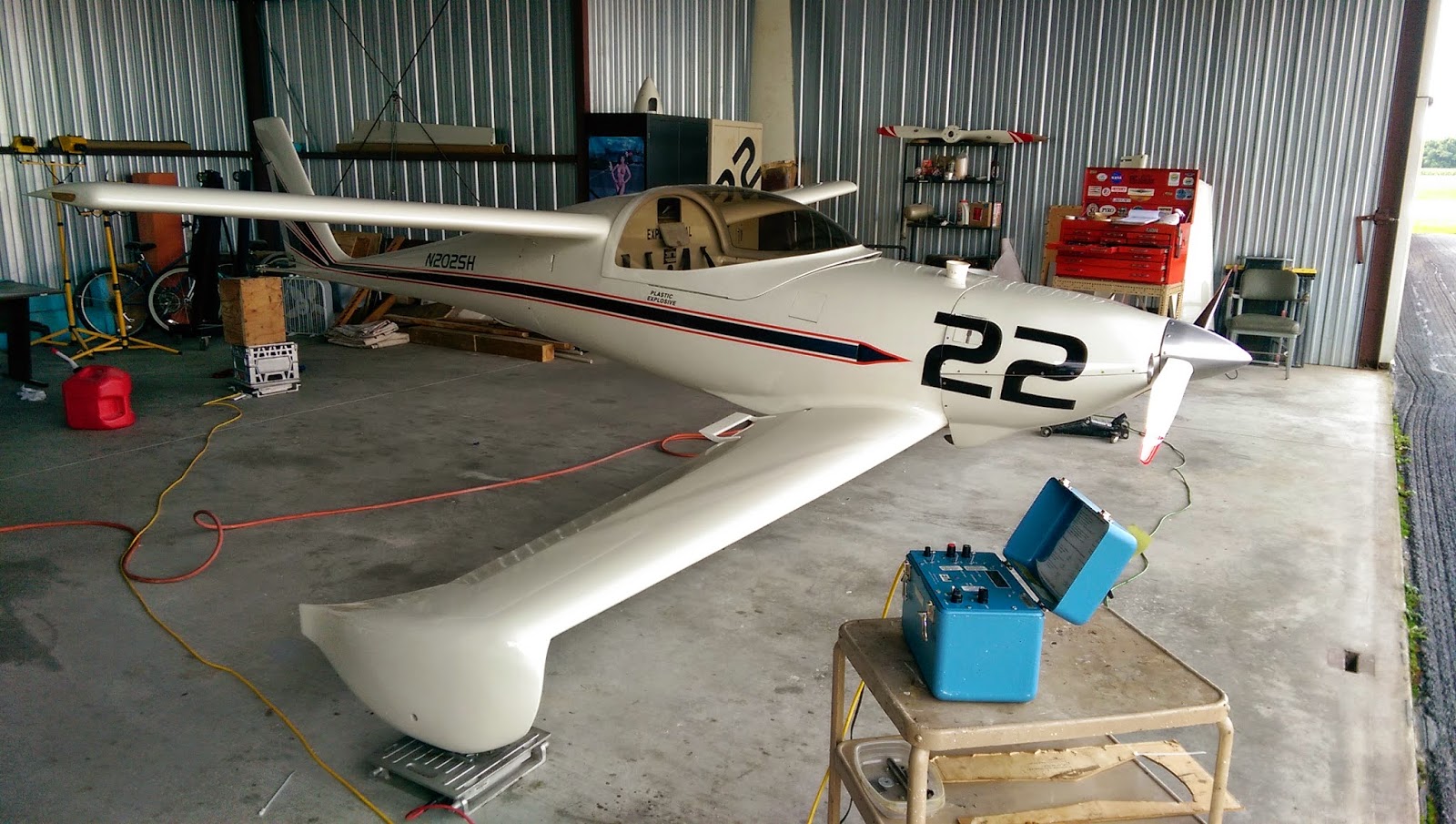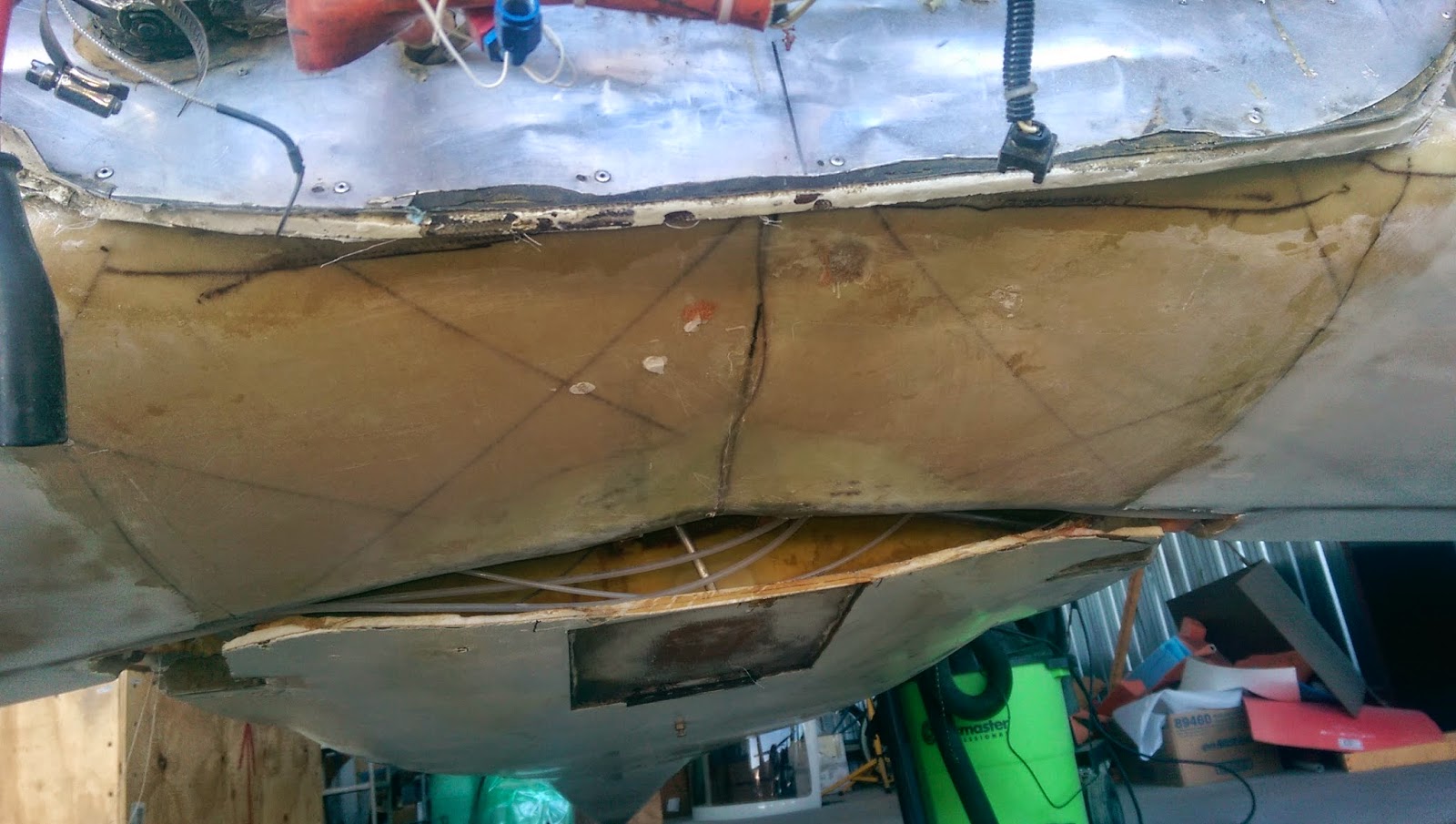I loaded up with 32 gallons of fuel and hit the road. Really, the plane flew just great. The cylinder head temps got hot on climb out, but I could fix that by lowering the nose, increasing the mixture, and throttling back a little. Remember, this engine isn't fully broken in yet and I still have some work to do sealing the air gaps in the plenum.
I used flight following both ways. It's better than filing a VFR flight plan, because they know where you are all the time, and it is good practice communicating with ATC. This map shows the return trip. I was almost out of Massachusetts when I started flight following, that's why it's not showing KORE as the origin. The joggles are where I had to fly around some Class B airspace and some clouds.
On the way out, I stopped for fuel in Columbia, NY. I was pretty sure I had enough to make it the additional 65 nautical miles to Orange, but better safe than - well you know.
I was very happy to make it to Orange and see Dave Dugas, the organizer. Jerry Marstall already there beat me there, by a day.
We had five Q birds, one Cozy and a Bonanza attend.
Q-2: Dave Dugas
Q-200s: Sam Hoskins, Paul Fisher
TriQ200s: Jerry Marstall, Bruce Crain
Cozy: Rodney Herzig
Bonanza: Mike Bergen
Jerry and I flew up to New Hampshire to look for a long gone cabin he used to own. This gave us the opportunity for some fun formation flying. We stopped at Keene, NH where were were met by the other guys for lunch. Fun.
We had five Q birds, one Cozy and a Bonanza attend.
Q-2: Dave Dugas
Q-200s: Sam Hoskins, Paul Fisher
TriQ200s: Jerry Marstall, Bruce Crain
Cozy: Rodney Herzig
Bonanza: Mike Bergen
Jerry and I flew up to New Hampshire to look for a long gone cabin he used to own. This gave us the opportunity for some fun formation flying. We stopped at Keene, NH where were were met by the other guys for lunch. Fun.
Some people have just too much fun.
Bruce Crain gave lots of rides.
Jay Scheevel gave us a great presentation on the aerodynamics of our little planes. I hope he publishes it, because it was a lot of great information that will take a while for this feeble brain to digest.
First time I attended a clam event. It was good, but things did not go well for me later in the evening. Probably just too much of a good thing.
Dave steaming the corn, clams and lobsters.
It was not a good day to be a lobster.
These little guys were awaiting us Sunday morning.

My guy was green. Something to do with the clams, I think.
Finally, it was time to hit the sky and head home. The weather was clear, with light varying headwinds. I was able to make it all the way, 975 miles, non-stop. Five hours and 45 minutes is a long time to sit in one place. When I landed, I still had another 75-100 miles of fuel left, so I must have used about 27 gallons for the trip. Comes out to around 4.6 gal./hr, and 36 miles/gal. Not too bad. BTW, only used 1/2 quart of oil.
Whew! Am I glad to get that trip behind me. Now, how can I get this thing to go faster?
















.JPG)








































